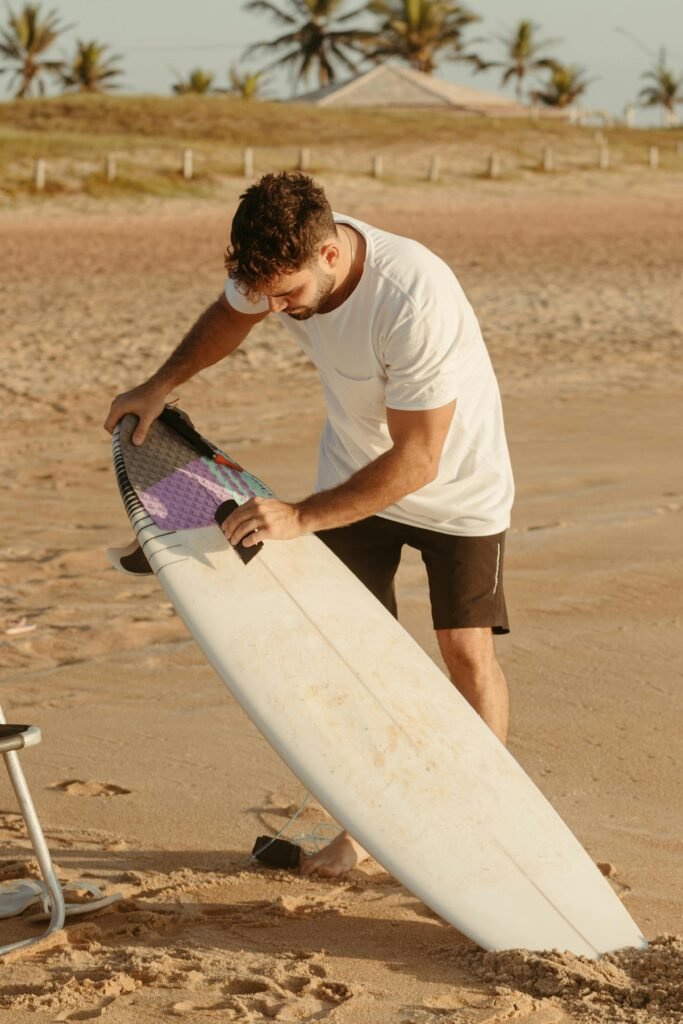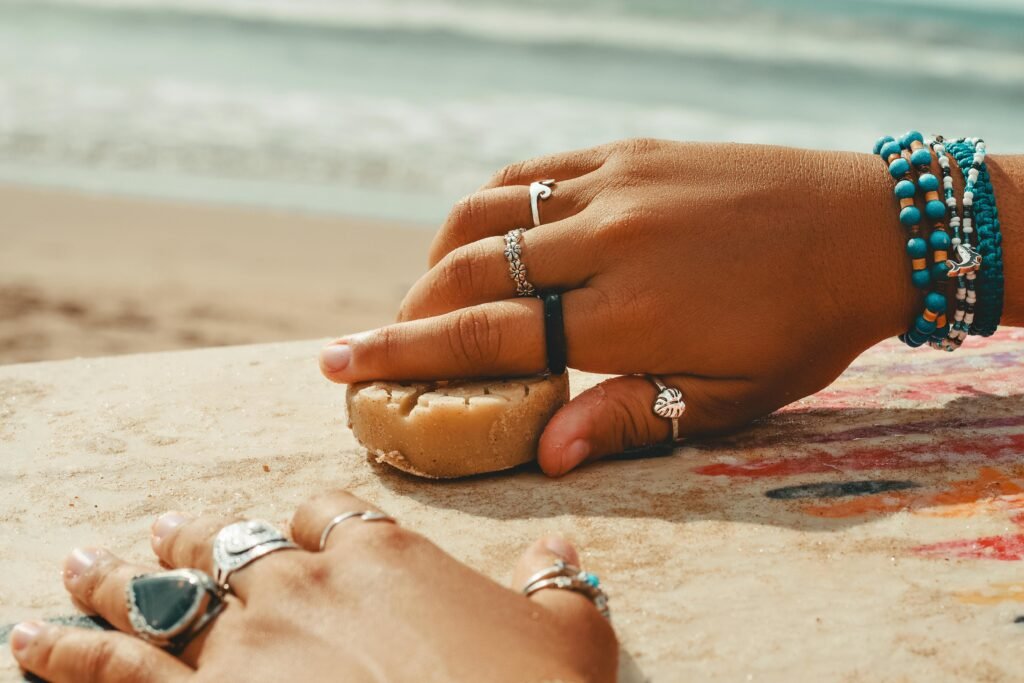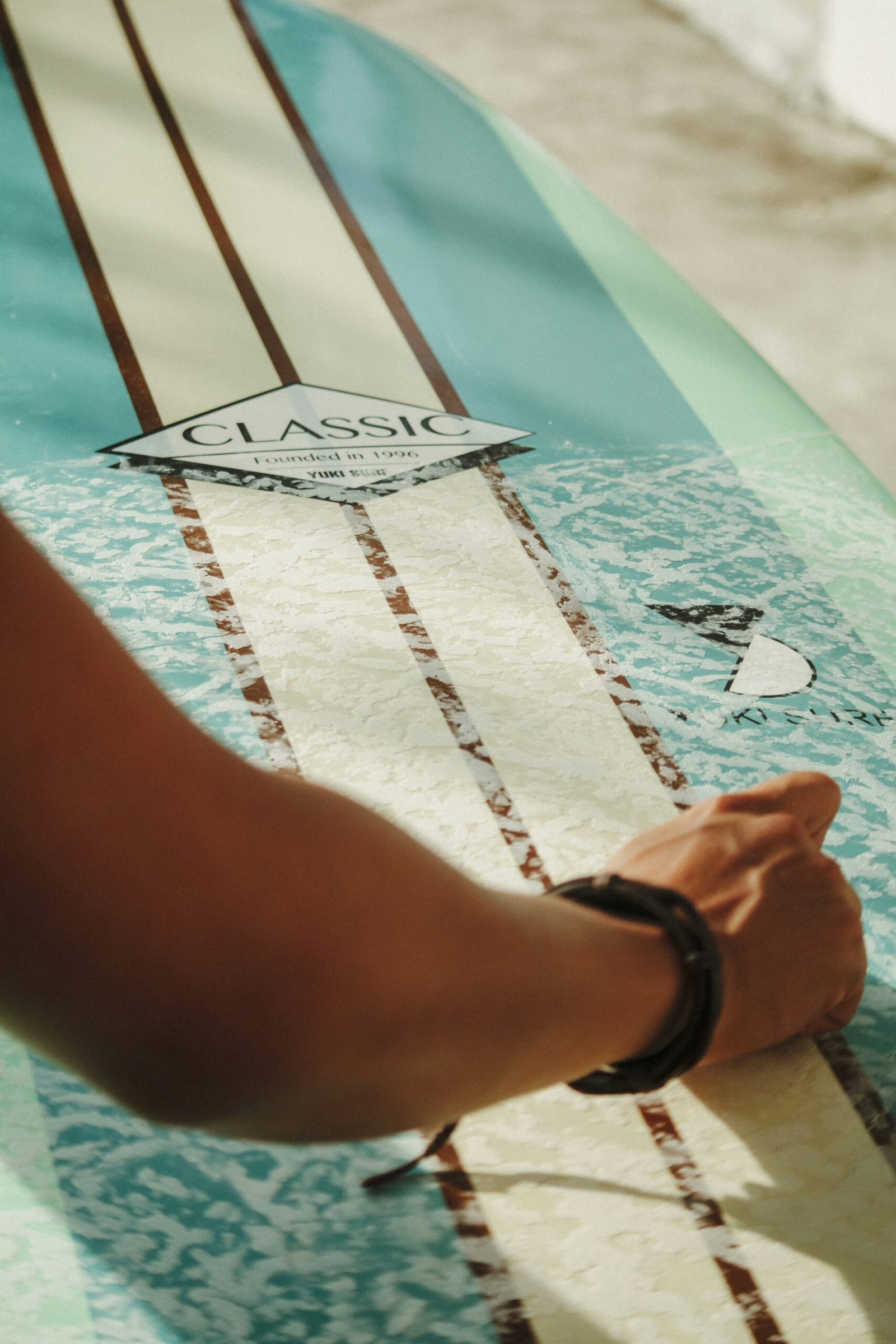Understanding Surf Wax and Its Importance
Surf wax is a specific product designed to create traction between a surfer’s feet and their surfboard. This essential component of surfing gear significantly improves grip, enabling surfers to maintain control while riding waves. Without an appropriate application of surf wax, surfers may struggle to navigate the complexities of changing surf conditions, which can pose risks to both performance and safety.
There are various types of surf wax categorized primarily based on water temperature: warm, cool, and cold water wax. Warm water wax is typically softer and stickier, suitable for temperatures above 70°F (21°C), while cool water wax is designed for conditions between 60°F (15°C) and 70°F (21°C). Cold water wax, on the other hand, is formulated for temperatures below 60°F (15°C) and is generally harder to withstand the lower heat levels. Choosing the correct type of wax for the respective water conditions enhances performance and allows surfers to enjoy their time in the ocean without unnecessary slippage.
The effectiveness of surf wax also lies in its composition. Most surf wax products comprise a blend of paraffin, beeswax, and natural resins, providing the right balance of stickiness and durability. While many commercial surf wax brands prioritize performance, awareness of environmental considerations has led to the emergence of eco-friendly alternatives. These alternative products often utilize plant-based ingredients, appealing to environmentally-conscious surfers seeking to minimize their ecological footprint.
In conclusion, surf wax is an indispensable tool for surfers, significantly impacting their performance, safety, and enjoyment in the water. By understanding the different types of surf wax available and how they correlate with various water temperatures, surfers can select the most appropriate wax to meet their needs effectively. To explore high-quality surf wax options, consider visiting reputable retailers and manufacturers linked within this guide.

How to Choose the Right Surf Wax for Your Conditions
Selecting the appropriate surf wax is crucial for optimal board performance, and several key factors come into play during this decision-making process. One of the most significant considerations is the water temperature where you plan to surf. Surf wax is available in different hardness levels, typically categorized into warm, cool, and cold waxes. Warm water typically necessitates a softer wax, while cooler conditions call for a harder formula. Understanding the specific temperature range of your surf environment can significantly enhance your grip on the board.
Another essential factor is the type of surfboard you own. Different board materials and shapes can affect how well the wax adheres. For instance, surfboards made of epoxy often require a different type of wax compared to traditional polyurethane boards. Additionally, surfboards designed for performance or for beginners may also influence the wax choice, as certain products work better for specific board designs and intended uses.
Some surfers may prioritize grip above all, while others might focus on ease of application or temperature adaptability. It is advisable to experiment with various brands to determine which wax best suits your personal surfing style. Popular surf wax brands like Sticky Bumps, Mrs. Palmers, and Sex Wax often feature a range of products tailored for different conditions and preferences. Comprehensive reviews and comparison articles can guide you to make an informed choice.
Incorporating these factors when selecting surf wax will not only improve your overall surfing experience but can also enhance your performance on the waves. Always remember, that the right surf wax can make a significant difference in your grip and comfort, allowing you to enjoy your time on the water to the fullest.

Applying and Maintaining Surf Wax Like a Pro
Applying surf wax effectively is crucial for optimal grip and performance on your surfboard. To begin, ensure that your surfboard is clean and dry. Old wax can impede the application of new layers, so it is important to remove any existing wax thoroughly. A plastic scraper can be used to gently scrape off the old wax. For persistent or hard-to-remove residues, heating the wax slightly with a hairdryer can make it easier to peel off. Once the old wax is cleared, clean the surface with a cloth to eliminate any dust or debris, allowing the new wax to adhere properly.
This initial layer is typically softer and helps to create a foundation for better grip. Using a circular motion, apply the base coat evenly over the top surface of your board. Be sure to cover all areas that may come in contact with your feet. After the base coat, you can add a top coat that is firmer in texture, which will provide the necessary traction needed for performance. Layer the top coat using the same circular motion and applying more pressure if you desire a rougher texture.
The frequency of reapplication largely depends on several factors, including how often you surf, water temperature, and general wear. As a rule of thumb, it is advisable to check your wax after each surf session. Warmer waters tend to melt the wax quicker, requiring more frequent applications. Generally, every 5-10 surf sessions is a good guideline for reapplying wax. For more detailed visual guidance, consider checking out video tutorials or articles that offer practical demonstrations on surf wax application and maintenance, which can further enhance your understanding and skills.

Eco-Friendly Wax Options and Sustainable Practices
The growing concern over environmental issues has led to increased demand for eco-friendly surf wax options within the surfing community. Traditional surf wax is often composed of petroleum-based products, which can contribute to pollution and harm marine ecosystems. As surfers become more aware of their ecological footprint, brands are stepping up to create sustainable alternatives that offer similar performance without the environmental downsides.
Many companies are now producing this type of wax using natural, renewable materials such as plant-based oils, beeswax, and carnauba wax. These biodegradable options not only perform well in various surf conditions but also break down naturally, minimizing their impact on the ocean and local beaches. Brands such as EcoSurf Wax and Green Wax Co. exemplify this commitment by offering eco-friendly products that do not compromise on quality.
In addition to utilizing sustainable materials, some brands are adopting environmentally conscious practices throughout their production processes. From using recycled packaging to reducing energy consumption during manufacturing, these initiatives contribute to a more sustainable surfing culture. It is essential for consumers to support these brands, as their growth encourages further innovation in eco-friendly products.
Proper disposal and recycling of surf wax are also critical components of sustainable practices. Surfers can significantly lessen their environmental impact by disposing of their used wax responsibly. Many wax companies are now promoting return programs that allow customers to send back their empty containers and leftover wax. This commitment to sustainability not only benefits the environment but also fosters a sense of community among surfers and reinforces the shared responsibility toward ocean preservation.





Leave a Reply